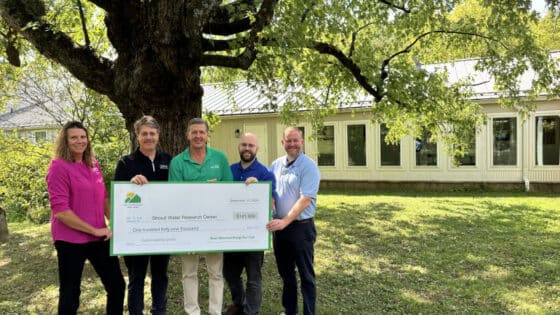Maritza Biological Station: Discovering a Tropical Freshwater Research Oasis

I’m on my first trip to Stroud Water Research Center’s Maritza Biological Station (Estación Biológica Maritza) and am joined by Executive Director Dave Arscott, Ph.D., Steve and Mayra Stroud of the Asociación Centro de Investigación Stroud, and Rafa Morales, Maritza’s longtime station manager.
It takes a half day to travel from Costa Rica’s capital, San Jose, to Maritza, which is perched on the western shoulder of Volcán Orosí and the continental divide. The last hour is along a bumpy dirt path, with the forest close on all sides. Rafa occasionally stops the car, grabs his handy machete, and chops down brambles and branches that have gotten in the way.
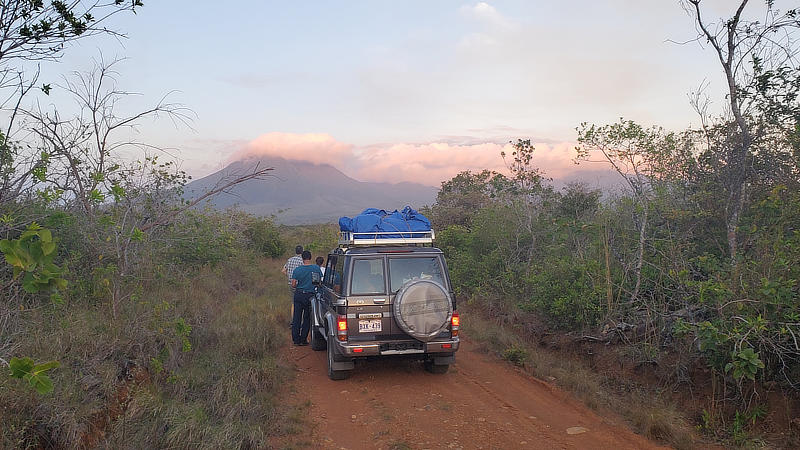
The forest teems with sounds and movement. Birds dart across the path, bunnies zigzag, and the constantly blowing wind makes it look like the grasses are waving us along our way. We cross the first of three narrow bridges. Rafa stops to show us a picture of when the flood waters came and submerged the bridge.
When we reach the top of the hill, Maritza’s buildings come into sight. While they look like regular buildings, they are anything but ordinary. In fact, the work taking place at Maritza is unparalleled: it houses one of the world’s longest continuously running data collections from tropical freshwater ecosystems.
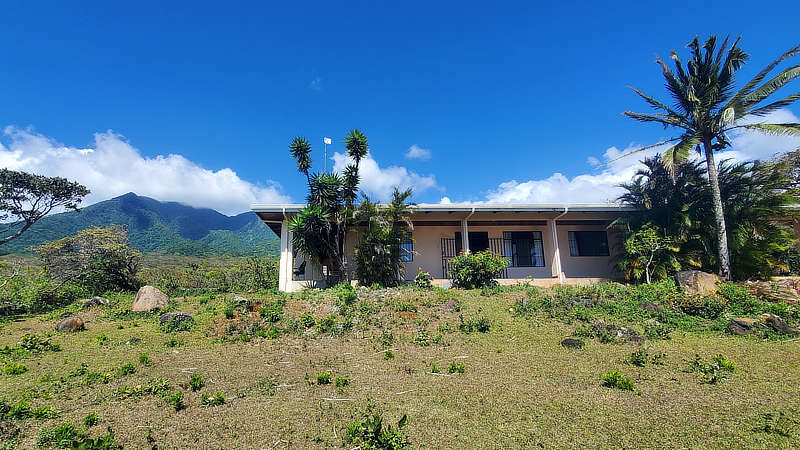
Why does this matter? Because to protect tropical freshwater ecosystems, we must first understand them. Understanding these tropical ecosystems has been the focus of Maritza since it was dedicated by Costa Rica’s President Rafael Calderon as a permanent freshwater facility on World Water Day on March 22, 1987.
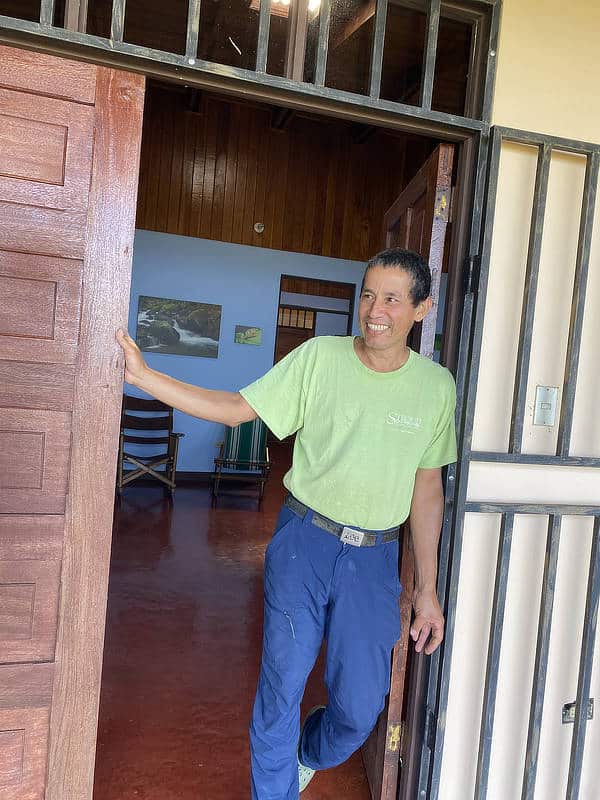
After Rafa masterfully navigates us into a narrow spot to park, we enter Maritza’s biologist’s house, which he and his wife have meticulously maintained over the past 30 years. We go to sleep and wake up to the sounds of the relentlessly blowing tradewinds that rise from the east (Caribbean) and spill over Orosí’s volcanic peak.
That first morning, we step out on the porch to a rainbow in the sky, nearly as wide as the eye can see, across the western coastal landscape in the distance. It gradually lowers, until it becomes a colorful mist atop the tree line. It seems like a good omen: the transformative beauty of the sun’s backlighting hitting the rain and mist spilling over the mountain.
After the rainbow sets, we head out to explore the streams and grounds that surround Maritza, which is part of the Area de Conservación Guanacaste (ACG).
The ACG is a UNESCO World Heritage Site and a permanently conserved, government-owned wildland. It protects an estimated 375,000 species and is the site of the largest forest restoration project in the tropics, now at nearly 170,000 hectares.
Costa Rica comprises about 4.5% of the world’s biodiversity on only 0.03% of the earth’s surface. And 60% of Costa Rica’s biodiversity is in the Area de Conservación de Guanacaste!
It’s a remote area. As we walk, Rafa carries not only his machete but also his chainsaw. It’s not long before he stops to rev the chainsaw and cut down a big tree branch — less to help us walkers today than the horses that he often rides as he crosses miles of tropical forest to collect stream samples.
The first stream we come to is Río Tempisquito. We’ve been monitoring stream flow and collecting stream water and leaf litter samples there since Maritza was first established. This stream has excellent water quality at this elevation — about 1,900 feet above sea level — and also provides drinking water to the station.
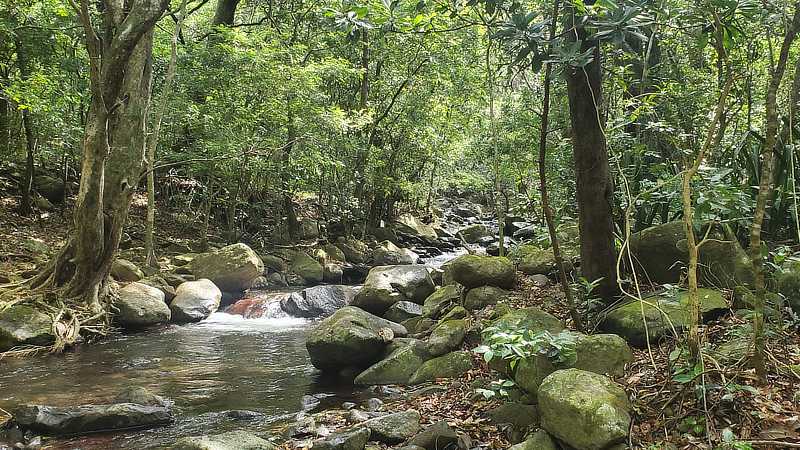
Rafa, Steve, and Mayra quickly cross the stream with no incident while I accidentally drop the shoes I took off to cross and just barely manage to snatch them up as they head downstream.
Not long afterward, we come to another stream, Río Tempisquito Sur, where Rafa often collects samples, and we cross without incident. Rafa shares that he collects samples at roughly two dozen sites once every two weeks.
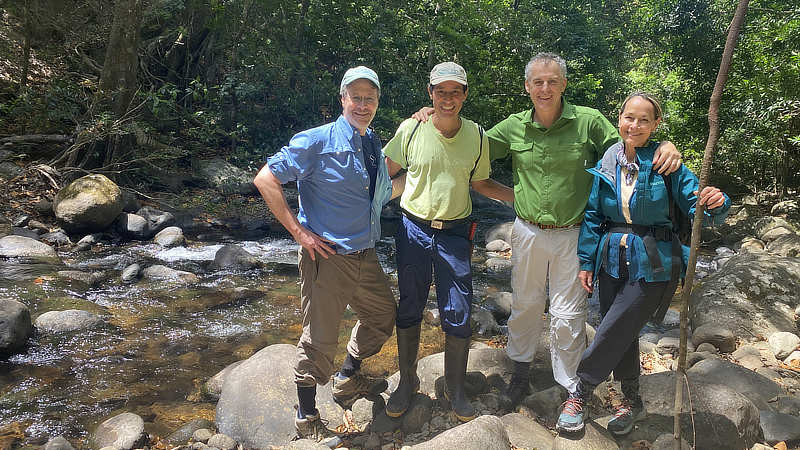
After about four hours of roundtrip hiking, we get back to Maritza and head over to the laboratory building, a critical part of Maritza science. It houses rows of cataloged samples. It also contains an indoor stream lab; water from the Río Tempisquito is pumped into the lab to be utilized for various studies. Currently, there is a bioreactor fed by this stream water that is used to study aspects of carbon cycling driven by microbes such as bacteria and fungi. The bioreactor is monitored daily to quantify dissolved organic carbon in stream water and its consumption by these critters.
Of all the biological stations within the ACG, Maritza is the only one hosting a science team that is focused on water monitoring, which makes it unique and valuable within the broader collaboration of organizations within the ACG.
The next day, we take a tour to see several of the other biological stations within the ACG; each supports conservation in its own way. Many of these stations are managed by the Guanacaste Dry Forest Conservation Fund, a close collaborator of the Stroud Center. The fund was started by Dan Janzen, the renowned evolutionary biologist who spearheaded the purchase of conserved land to create the ACG and who urged the Stroud Center to establish a freshwater science team within it.
At the first station we visit, Pitilla, we see bags of insects at different growth stages hanging across the ceiling. This is part of the BioAlfa project, an initiative to DNA barcode every species in Costa Rica and build a robust inventory of the diversity of life.
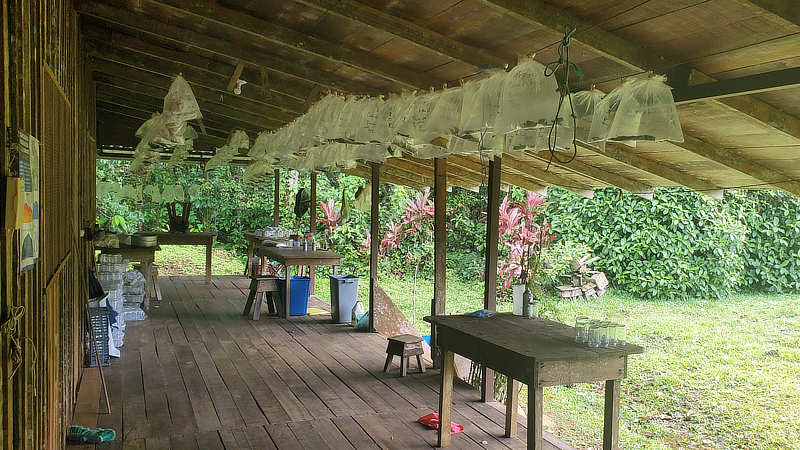
At the second station, San Girardo, the change in temperature and humidity is noticeable. The many microclimates within a short distance of each other make the ACG an ideal environmental laboratory to examine core questions impacting streams and rivers.
At each biological station and stop along the way, we see the pivotal role of water: from the oranges, coffee, and many other agricultural products being grown, to the water we need to quench our thirst, to the diversity of plant and animal species — all supported by water.
By the end of the trip, it is clear that the study of streams and rivers at Maritza plays a unique and important role within the ACG and within our global understanding of tropical freshwater ecosystems. We are all working to understand, protect, and preserve this most precious resource.
More About Maritza
- See Maritza for yourself (video)
- Spotted at Maritza! Latin America’s Land Mammal (video)
- Spotted at Maritza! The Caracolera, or Cloudy Snail-Eater Snake
- Follow the Martin! Migration Sensor Network Tracks Bird From Our Backyard to Central America
- Gone Fishin’: Evaluating the Threat of Agricultural Contaminants in the Río Sierpe
- Field Notes From Our Work in Costa Rica
- Tropical Research Reveals Climate Change Impacts on Water Quality


